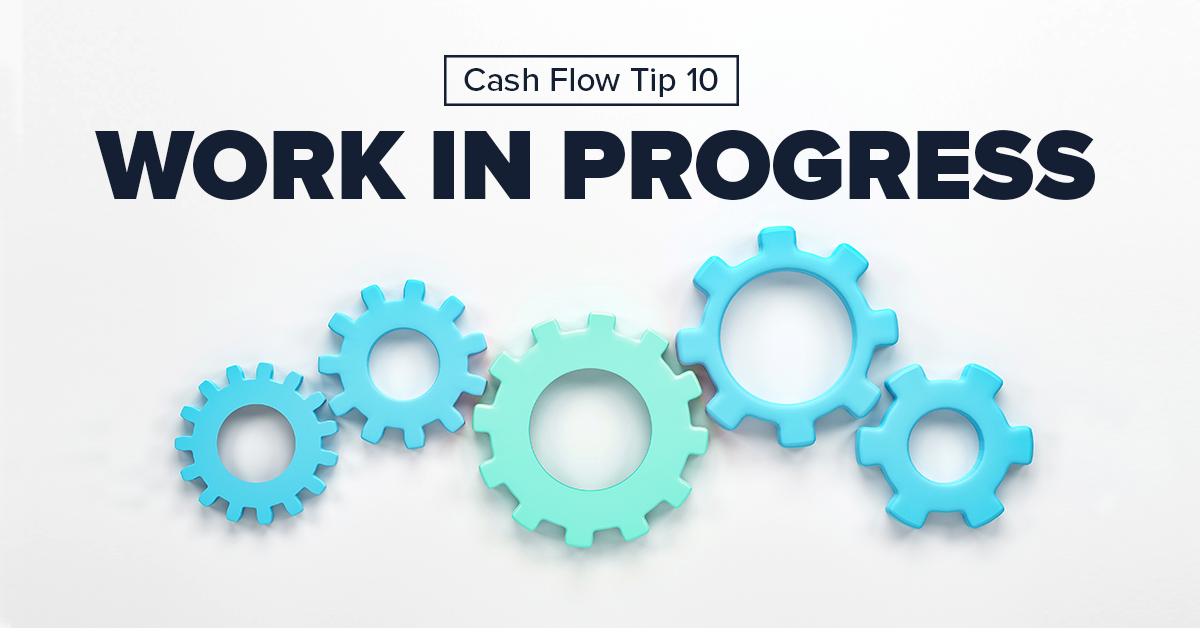Welcome to the next instalment of our Cash Flow Series, where we provide insights and strategies to optimise your business’s cash flow. In this blog post, we’ll focus on Tip #10: Work in Progress (WIP). WIP represents the money invested in partially completed jobs or projects. Efficient management of WIP is crucial for maximising cash conversion and improving cash flow. We’ll explore the importance of understanding the cash conversion cycle, the impact of WIP on cash flow, and three actionable steps to manage your WIP effectively.
Understanding Work in Progress (WIP)
Work in Progress (WIP) is the investment tied up in partially completed jobs or projects. It differs from inventory as it represents unfinished goods or services awaiting completion. The faster you can complete the work and convert it into cash, the better it is for your cash flow. WIP is part of the cash conversion cycle, which involves the timeframe from order to delivery and cash realisation. Understanding the cash conversion cycle and how it applies to your business is crucial for cash flow management.
Impact of WIP on Cash Flow
WIP primarily affects cash flow on the outflow side, as you incur costs for overheads and suppliers to produce the goods or services. It is essential to manage WIP effectively to minimise the time and costs associated with incomplete projects. By optimising WIP, you can enhance cash flow and overall financial performance.
Three Actionable Steps to Manage WIP
1. Measure What Matters: Implement a system to measure and track WIP on a regular basis. Report and manage the value tied up in WIP, ideally on a daily basis. This allows you to have a clear understanding of the money invested in unfinished projects and identify potential bottlenecks or delays. By monitoring WIP, you can proactively manage and make decisions to expedite completion and cash conversion.
2. Budget for WIP: Establish a budget for jobs in WIP to track and manage their progress. A budget provides a baseline for performance evaluation and helps you understand how you are performing against planned targets. It allows you to identify any variances, adjust resource allocation if necessary, and take corrective actions to ensure projects stay on track. By budgeting for WIP, you can effectively manage costs and streamline the cash conversion process.
3. Assign the Right People to the Right Jobs: Evaluate your workflow process and ensure that the right people are assigned to the appropriate tasks. This includes reviewing your process flow from earlier blogs and videos. Assess if each functional role is aligned with the tasks in the process and if the right people are fulfilling those roles. Identify any mistakes or inefficiencies and use them as opportunities for staff learning and development. By optimising your workflow and ensuring the right people are in the right roles, you can enhance productivity and expedite project completion.
Managing Work in Progress (WIP) is crucial for maximising cash conversion and improving cash flow. By measuring and monitoring WIP, budgeting for projects, and assigning the right people to the right tasks, you can effectively manage your WIP and streamline the cash conversion cycle. Remember, a proactive approach to WIP management allows you to minimise costs, reduce project timelines, and enhance cash flow. We hope that our Cash Flow Series has provided valuable insights and strategies for managing and improving cash flow in your business. Keep implementing these tips and stay tuned for more resources to support your financial success.
Head to our YouTube channel to view our Cash Flow Tip #10 video along with all the other tips in this series!


